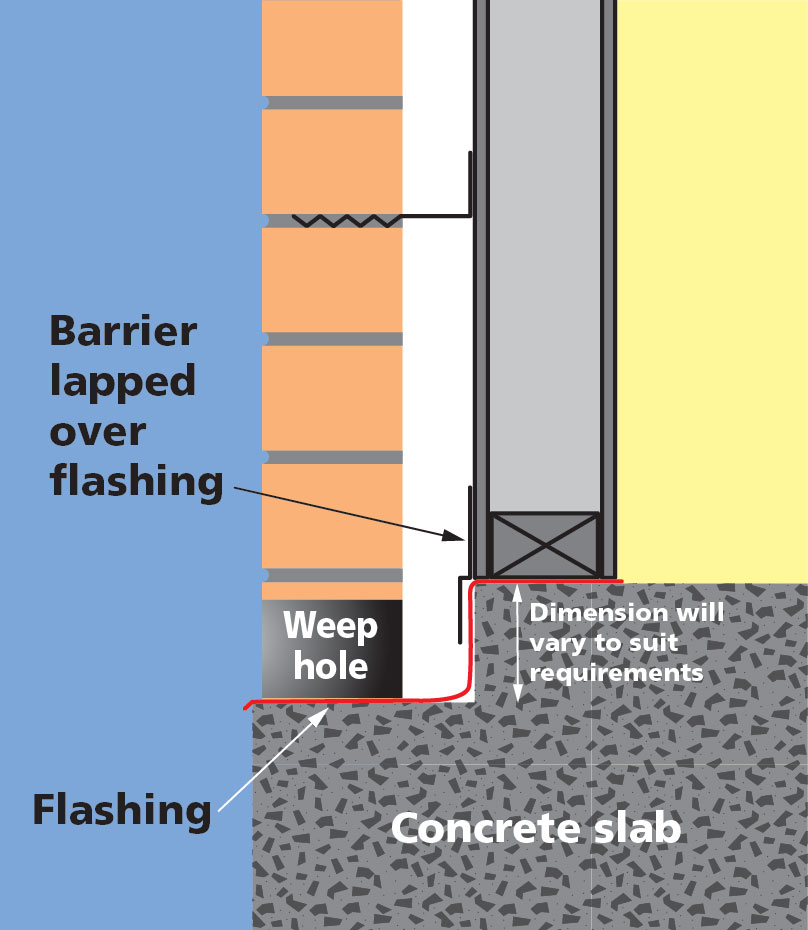Here at Weepa we receive many calls from home owners who are either worried about, or have been told that, the damp and moisture problems in their homes are caused by the entry of water through weepholes.
In 2010 we commissioned research by Griffith University to investigate whether this was possible. This research demonstrated that even under truly extraordinary conditions water rarely enters the weephole and even if it does it cannot be blown high enough up in the cavity to create internal damp problems.
To understand why, it’s important to look at the details of a correctly constructed cavity wall. The diagram below shows the location of flashing which extends from underneath the weephole upward to contact the internal skin of the cavity. You can see that this flashing functions to guide and drain any moisture which might enter through a weep hole straight back out again.
At this point you might be asking “Well what is the problem and how do I fix it?”
If you have damp and moisture problems with your walls it almost certainly comes from a different source. Furthermore, if you block your weep holes in an attempt to solve that problem then you will prevent the drainage of that water and the airflow needed to completely dry the cavity. This will likely cause catastrophic problems.
The possible culprits are:
